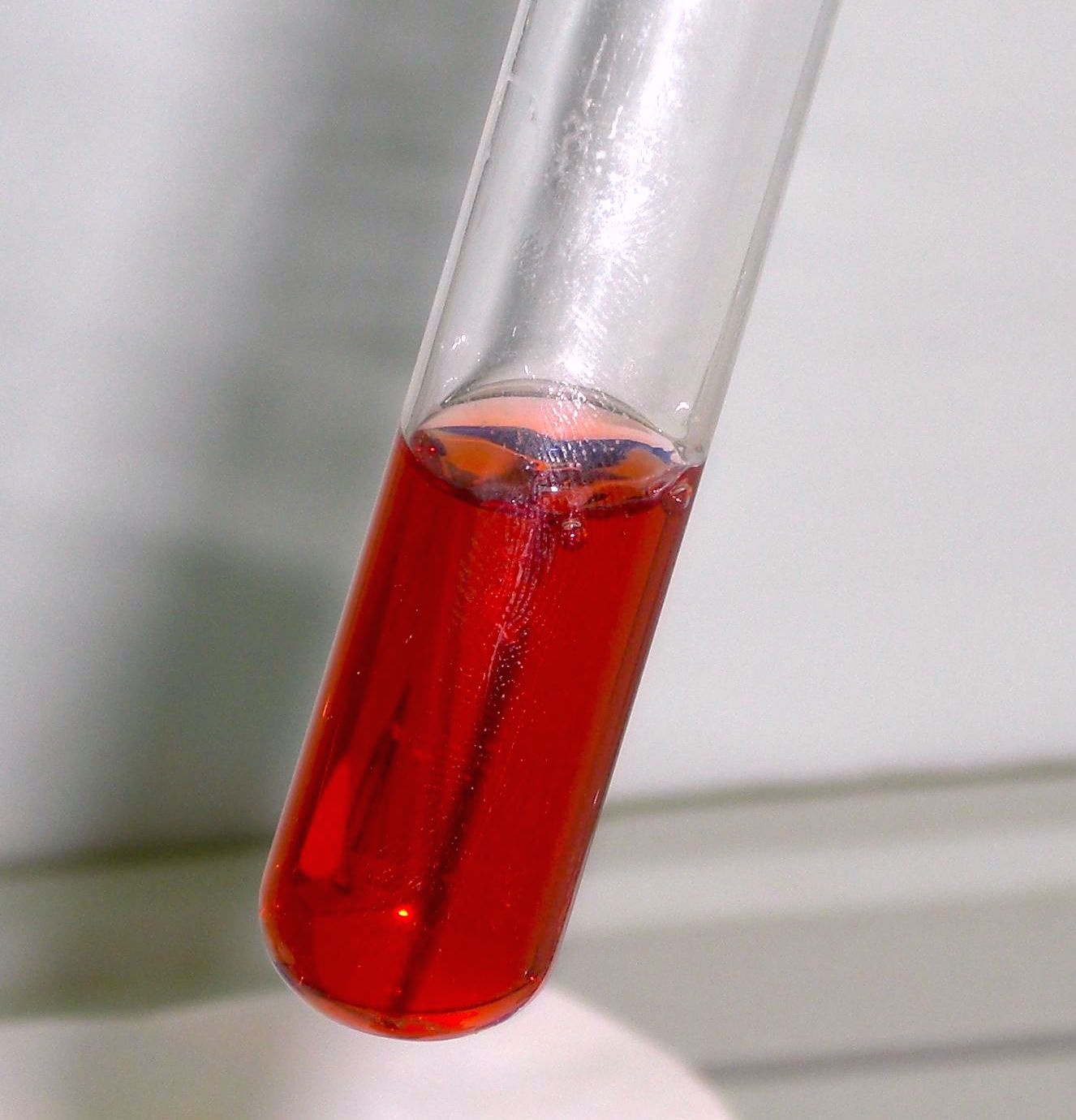|
Aldoses
An aldose is a monosaccharide (a simple sugar) with a carbon backbone chain with a carbonyl group on the endmost carbon atom, making it an aldehyde, and hydroxyl groups connected to all the other carbon atoms. Aldoses can be distinguished from ketoses, which have the carbonyl group away from the end of the molecule, and are therefore ketones. Structure Like most carbohydrates, simple aldoses have the general chemical formula C''n''(H2O)''n''. Because formaldehyde (n=1) and glycolaldehyde (n=2) are not generally considered to be carbohydrates, the simplest possible aldose is the triose glyceraldehyde, which only contains three carbon atoms. Because they have at least one asymmetric carbon center, all aldoses exhibit stereoisomerism. Aldoses can exist in either a - form or - form. The determination is made based on the chirality of the asymmetric carbon furthest from the aldehyde end, namely the second-last carbon in the chain. Aldoses with alcohol groups on the right of the Fisch ... [...More Info...] [...Related Items...] OR: [Wikipedia] [Google] [Baidu] |
Seliwanoff's Test
Seliwanoff’s test is a chemical test which distinguishes between aldose and ketose sugars. If the sugar contains a ketone group, it is a ketose. If a sugar contains an aldehyde group, it is an aldose. This test relies on the principle that, when heated, ketoses are more rapidly dehydrated than aldoses. It is named after Theodor Seliwanoff, the chemist who devised the test. When added to a solution containing ketoses, a red color is formed rapidly indicating a positive test. When added to a solution containing aldoses, a slower forming light pink is observed instead. The reagents consist of resorcinol and concentrated hydrochloric acid: * The acid hydrolysis of polysaccharide and oligosaccharide ketoses yields simpler sugars followed by furfural.Abramoff, Peter; Thomson, Robert (1966). An experimental approach to biology. WH Freeman & Company, San Francisco. p. 47. * The dehydrated ketose then reacts with two equivalents of resorcinol in a series of condensation reactions to ... [...More Info...] [...Related Items...] OR: [Wikipedia] [Google] [Baidu] |
Monosaccharide
Monosaccharides (from Greek '' monos'': single, '' sacchar'': sugar), also called simple sugars, are the simplest forms of sugar and the most basic units (monomers) from which all carbohydrates are built. Chemically, monosaccharides are polyhydroxy aldehydes with the formula or polyhydroxy ketones with the formula with three or more carbon atoms. They are usually colorless, water- soluble, and crystalline organic solids. Contrary to their name (sugars), only some monosaccharides have a sweet taste. Most monosaccharides have the formula (CH2O)''x'' (though not all molecules with this formula are monosaccharides). Examples of monosaccharides include glucose (dextrose), fructose (levulose), and galactose. Monosaccharides are the building blocks of disaccharides (such as sucrose, lactose and maltose) and polysaccharides (such as cellulose and starch). The table sugar used in everyday vernacular is itself a disaccharide sucrose comprising one molecule of each of the two ... [...More Info...] [...Related Items...] OR: [Wikipedia] [Google] [Baidu] |
Ribose
Ribose is a simple sugar and carbohydrate with molecular formula C5H10O5 and the linear-form composition H−(C=O)−(CHOH)4−H. The naturally occurring form, , is a component of the ribonucleotides from which RNA is built, and so this compound is necessary for coding, decoding, regulation and expression of genes. It has a structural analog, deoxyribose, which is a similarly essential component of DNA. is an unnatural sugar that was first prepared by Emil Fischer and Oscar Piloty in 1891. It was not until 1909 that Phoebus Levene and Walter Jacobs recognised that was a natural product, the enantiomer of Fischer and Piloty's product, and an essential component of nucleic acids. Fischer chose the name "ribose" as it is a partial rearrangement of the name of another sugar, arabinose, of which ribose is an epimer at the 2' carbon; both names also relate to gum arabic, from which arabinose was first isolated and from which they prepared . Like most sugars, ribo ... [...More Info...] [...Related Items...] OR: [Wikipedia] [Google] [Baidu] |
Arabinose
Arabinose is an aldopentose – a monosaccharide containing five carbon atoms, and including an aldehyde (CHO) functional group. Properties For biosynthetic reasons, most saccharides are almost always more abundant in nature as the "D"-form, or structurally analogous to D-glyceraldehyde.The D/L nomenclature does not refer to the molecule's optical rotation properties but to its structural analogy to glyceraldehyde. However, L-arabinose is in fact more common than D-arabinose in nature and is found in nature as a component of biopolymers such as hemicellulose and pectin. The L-arabinose operon, also known as the araBAD operon, has been the subject of much biomolecular research. The operon directs the catabolism of arabinose in ''E. coli'', and it is dynamically activated in the presence of arabinose and the absence of glucose. A classic method for the organic synthesis of arabinose from glucose is the Wohl degradation. : Etymology Arabinose gets its name from gum arabic, ... [...More Info...] [...Related Items...] OR: [Wikipedia] [Google] [Baidu] |
Pentose
In chemistry, a pentose is a monosaccharide (simple sugar) with five carbon atoms. The chemical formula of many pentoses is , and their molecular weight is 150.13 g/mol.-Ribose . PubChem compound webpage, accessed on 2010-02-06. Pentoses are very important in . Ribose is a constituent of , and the related molecule, deoxyribose, is a constituent of DNA. ... [...More Info...] [...Related Items...] OR: [Wikipedia] [Google] [Baidu] |
Threose
Threose is a four-carbon monosaccharide with molecular formula C4H8O4. It has a terminal aldehyde group, rather than a ketone, in its linear chain and so is considered part of the aldose family of monosaccharides. The threose name can be used to refer to both the - and - stereoisomers and more generally to the racemic mixture (/L-, equal parts D- and L-) as well as to the more generic threose structure (absolute stereochemistry unspecified). The prefix "threo-" which derives from threose (and "erythro-" from a corresponding diastereomer erythrose) offer a useful way to describe general organic structures with adjacent chiral centers, where "the prefixes... designate the relative configuration of the centers".Formulas Using Other Configurational Notations W. Rausch, access ... [...More Info...] [...Related Items...] OR: [Wikipedia] [Google] [Baidu] |
Tetrose
In organic chemistry, a tetrose is a monosaccharide with 4 carbon atoms. They have either an aldehyde () functional group in position 1 (aldotetroses) or a ketone () group in position 2 (ketotetroses). File:DErythrose Fischer.svg , D-Erythrose File:DThreose Fischer.svg , D-Threose File:DErythrulose Fischer.svg , D-Erythrulose The aldotetroses have two chiral centers ( asymmetric carbon atoms) and so 4 different stereoisomers are possible. There are two naturally occurring stereoisomers, the enantiomers of erythrose and threose having the D configuration but not the L enantiomers. The ketotetroses have one chiral center and, therefore, two possible stereoisomers: erythrulose (L- and D-form). Again, only the D enantiomer is naturally occurring. Biological Functions There are a few known ways that tetrose sugars are used in nature. Some are seen in metabolic pathways and others are known to affect certain enzymes. Intermediates in the Pentose Phosphate Pathway One of the me ... [...More Info...] [...Related Items...] OR: [Wikipedia] [Google] [Baidu] |
Triose
A triose is a monosaccharide, or simple sugar, containing three carbon atoms. There are only three possible trioses: the two enantiomers of glyceraldehyde, which are aldoses; and dihydroxyacetone, a ketose which is symmetrical and therefore has no enantiomers. Trioses are important in photosynthesis and cellular respiration. During glycolysis, fructose-1,6-bisphosphate is broken down into glyceraldehyde-3-phosphate and dihydroxyacetone phosphate. Lactic acid and pyruvic acid are later derived from these molecules. Importance of triose in animal physiology * Trioses serve as metabolic intermediates in various different metabolic pathways such as glycolysis, gluconeogenesis, and the pentose phosphate pathway. * Trioses contribute to the synthesis of essential biomolecules including lipids, amino acid Amino acids are organic compounds that contain both amino and carboxylic acid functional groups. Although over 500 amino acids exist in nature, by far the most imp ... [...More Info...] [...Related Items...] OR: [Wikipedia] [Google] [Baidu] |
Family Tree Aldoses
Family (from ) is a group of people related either by consanguinity (by recognized birth) or affinity (by marriage or other relationship). It forms the basis for social order. Ideally, families offer predictability, structure, and safety as members mature and learn to participate in the community. Historically, most human societies use family as the primary purpose of attachment, nurturance, and socialization. Anthropologists classify most family organizations as matrifocal (a mother and her children), patrifocal (a father and his children), conjugal (a married couple with children, also called the nuclear family), avuncular (a man, his sister, and her children), or extended (in addition to parents, spouse and children, may include grandparents, aunts, uncles, or cousins). The field of genealogy aims to trace family lineages through history. The family is also an important economic unit studied in family economics. The word "families" can be used metaphorically to cr ... [...More Info...] [...Related Items...] OR: [Wikipedia] [Google] [Baidu] |
Isomer
In chemistry, isomers are molecules or polyatomic ions with identical molecular formula – that is, the same number of atoms of each element (chemistry), element – but distinct arrangements of atoms in space. ''Isomerism'' refers to the existence or possibility of isomers. Isomers do not necessarily share similar chemical property, chemical or physical property, physical properties. Two main forms of isomerism are structural isomerism, structural (or constitutional) isomerism, in which ''chemical bond, bonds'' between the atoms differ; and stereoisomerism (or spatial isomerism), in which the bonds are the same but the ''relative positions'' of the atoms differ. Isomeric relationships form a hierarchy. Two chemicals might be the same constitutional isomer, but upon deeper analysis be stereoisomers of each other. Two molecules that are the same stereoisomer as each other might be in different conformational forms or be different Isotopologue, isotopologues. The depth of analy ... [...More Info...] [...Related Items...] OR: [Wikipedia] [Google] [Baidu] |
Dehydration Reaction
In chemistry, a dehydration reaction is a chemical reaction that involves the loss of an H2O from the reacting molecule(s) or ion(s). This reaction results in the release of the H2O as water. When the reaction involves the coupling of two molecules into a single molecule it is referred to as a condensation reaction. Dehydration reactions are common processes in the manufacture of chemical compounds as well as naturally occurring within living organisms. The reverse of a dehydration reaction is called a hydration reaction. The reverse of a condensation reaction yielding water is called hydrolysis. Condensation reactions occurring in living organisms Condensation dehydration reactions are fundamental to the existence of life as this type of reaction produces proteins from amino acids, DNA and RNA from nucleotides, fats from fatty acids, and polysaccharides (eg. cellulose, starch, sugar, lactose) from monosaccharides (eg. glucose and fructose). The formation of the pyrophosphat ... [...More Info...] [...Related Items...] OR: [Wikipedia] [Google] [Baidu] |



